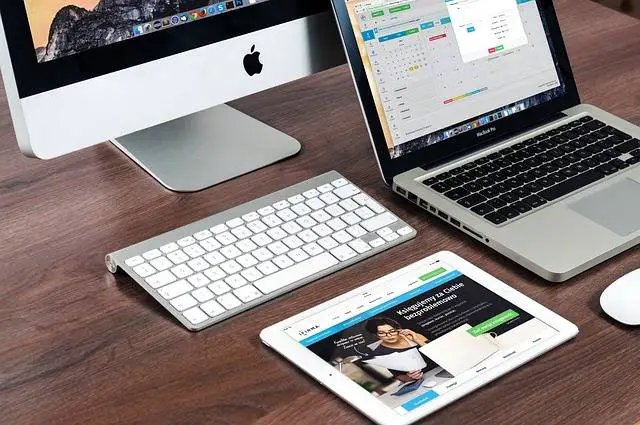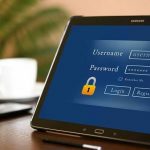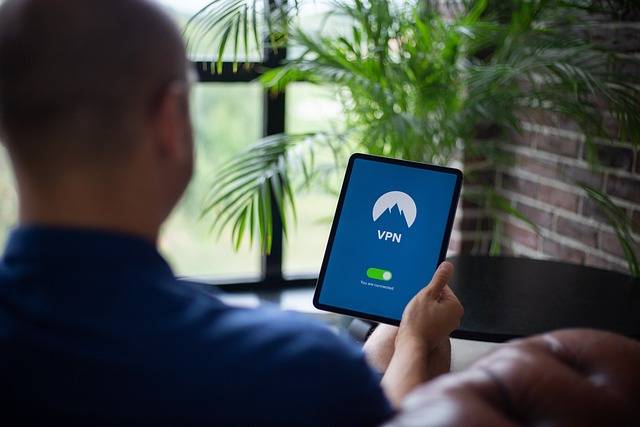Are you worried about your Mac’s battery life being drained by using a VPN? If so, this article is for you!
In it, we’ll discuss how to extend the battery life of your Mac while still taking advantage of the security benefits that come with using a VPN. We’ll also explore whether or not using a VPN actually impacts the battery of your Mac and what are some best practices for optimizing its performance.
Finally, we will answer if sacrificing some of your device’s battery life is worth increased security when it comes to protecting yourself online. So read on and find out more!
Table of contents: Does VPN Drain Battery Mac
- Does Using a VPN Impact the Battery of My Mac?
- What Are the Benefits and Drawbacks of Using a VPN on Mac?
- Is It Worth Sacrificing Battery Life for Increased Security with a VPN?
- Discovering the Best Practices for Optimizing Your Mac’s Battery While Using a VPN
- How to Extend Battery Life on Your Mac with a VPN
Using a VPN (Virtual Private Network) can be an excellent way to protect your privacy and security online. But one of the drawbacks is that it can drain your Mac’s battery faster than usual.
This is because when you use a VPN, all of your internet traffic has to go through an extra layer of encryption before it reaches its destination, which takes up more power from your device.
So if you’re using a laptop or other mobile device with limited battery life, this could be problematic for you. Fortunately, there are some ways to minimize the impact that using a VPN has on your Mac’s battery life.
The first thing you should do is make sure that the VPN connection itself isn’t draining too much power by checking its settings in System Preferences > Network > Advanced Settings > Energy Saver tab and making sure “Prevent computer from sleeping automatically when connected” is unchecked.
This will ensure that the connection won’t stay active while not in use and thus won’t consume as much energy as it would otherwise.
Another way to reduce how much power using a VPN consumes on macOS devices is by disabling any unnecessary features such as split tunneling or DNS leak protection which may also take up additional resources without providing any real benefit for most users’ needs anyway.
So unless they’re absolutely necessary for what you need them for then they should probably be disabled in order to save some energy!
Additionally, if possible, try connecting directly over Ethernet instead of Wi-Fi – this will help reduce latency and improve speeds while also consuming less energy than wireless connections typically do due to their higher overhead requirements (especially on older hardware).
Finally, consider switching over to OpenVPN protocol instead of PPTP/L2TP since OpenVPN tends to require fewer resources overall compared with those two protocols – though keep in mind that this may not always provide better performance depending on where exactly each server location physically resides relative to yours geographically speaking!
Overall these steps should help reduce how much power using VPN drains from your Mac’s battery life, but ultimately, no matter what type or brand of software/hardware being used, there will always be some degree of resource consumption associated with running any kind of application like this so remember: don’t forget about taking regular breaks throughout the day too!
Does Using a VPN Impact the Battery of My Mac?
Using a Virtual Private Network (VPN) on your Mac can be an effective way to protect your online privacy and security. But does using a VPN impact the battery life of your Mac?
The answer is yes, but it’s not as bad as you might think. In general, running a VPN will have some effect on the battery life of your Mac.
This is because when you use a VPN, all of the data that passes through it must be encrypted before being sent over the internet. Encrypting this data requires more processing power from your computer than sending unencrypted data would require, which in turn uses up more energy from its battery.
However, this effect should not be too noticeable unless you are streaming video or gaming while connected to a VPN – activities that already put a strain on any device’s battery life anyway! If you are browsing websites or checking emails while connected to a VPN then there should only be minimal impact on the overall lifespan of your laptop’s battery charge cycle.
The best way to ensure that using a VPN doesn’t significantly affect the performance and longevity of your laptop’s batteries is by choosing one with low-power encryption algorithms such as OpenVPN or IKEv2/IPsec protocols instead of PPTP/L2TP protocols which consume higher amounts of electricity during their operations compared to other options available today for secure connections over public networks like Wi-Fi, hotspots, etc.
Additionally, make sure that the auto-connect feature isn’t enabled, so whenever possible, disconnect yourself manually after completing each task requiring usage for added safety against potential threats lurking around in cyberspace!
What Are the Benefits and Drawbacks of Using a VPN on Mac?
Using a VPN on Mac can be both beneficial and detrimental depending on your needs. On the plus side, it provides an extra layer of security when browsing online, as well as allows you to access geo-restricted content.
It also helps protect your privacy by masking your IP address and encrypting data sent over the internet. However, there are some drawbacks to using a VPN on Mac that should be taken into consideration before deciding whether or not it is right for you.
One of these drawbacks is that using a VPN may slow down your connection speed due to the encryption process taking place in order to secure data transmission between two points. Additionally, if you’re connecting from outside of the country where the server is located then this could further reduce speeds due to distance restrictions imposed by certain ISPs (Internet Service Providers).
Another potential issue with using a VPN on Mac relates directly to battery life – specifically, how much power will be drained while running one?
Unfortunately, there isn’t an exact answer here since this depends largely upon what type of device you’re running and how many active connections are being made at any given time; however, generally speaking, having multiple connections open will drain more power than just one or two so bear this in mind when making decisions about which service provider(s) best suit(s) your needs!
Is It Worth Sacrificing Battery Life for Increased Security with a VPN?
When it comes to online security, the question of whether or not sacrificing battery life for increased security with a VPN is worth it can be a difficult one. On the one hand, having an extra layer of protection against malicious actors and hackers is invaluable in today’s digital world.
On the other hand, running a VPN on your device can take up valuable resources and drain your battery faster than usual. The truth is that there are pros and cons to using a VPN on any device, including Mac computers.
For starters, when you use a reliable VPN service like NordVPN or ExpressVPN you get access to high-level encryption protocols, which will help protect your data from prying eyes while also keeping out malware and viruses that could harm your system. This means that even if someone were able to gain access to your network they wouldn’t be able to see what you’re doing online or steal sensitive information from you, such as passwords or credit card numbers.
However, this added layer of protection does come at some cost – namely in terms of battery life drainage due to higher CPU usage when connected through the virtual private network (VPN). While most modern Mac devices have enough power under their hoods so as not to suffer too much performance loss with regular usage (such as browsing websites), those who do more intensive tasks such as gaming may find themselves needing more juice than usual while connected through their chosen provider’s servers.
This leads them into having shorter sessions before needing another recharge session for their laptop/desktop computer’s batteries. At the end of the day, though, it really depends on how important online privacy & security are for each individual user. If these two factors are paramount, then investing in getting yourself set up with quality VPN service might be worth sacrificing some extra battery life here & there.
Discovering the Best Practices for Optimizing Your Mac’s Battery While Using a VPN
Using a VPN on your Mac can be a great way to protect your online privacy and security, but it can also have an impact on the battery life of your device. If you’re using a VPN regularly, it’s important to understand the best practices for optimizing its performance and preserving battery life.
The first step is understanding how much power each component of the connection requires. The encryption process used by most VPNs takes up some energy, as does maintaining an open connection with servers around the world.
Additionally, if you’re streaming or downloading content while connected to a VPN this will require more energy than simply browsing websites or sending emails without one. Once you know how much power each component requires, there are several ways that you can optimize your Mac’s battery while using a VPN:
– Use lighter protocols: Many modern-day protocols, such as OpenVPN, offer stronger encryption than older ones like PPTP but require more processing power from your device; so if possible, try switching to lighter protocols that still provide adequate protection for general use cases (e.g., web surfing).
– Disconnect when not in use: This may seem obvious but make sure that when you’re done with whatever task requires connecting through a secure tunnel – disconnect! Leaving connections open unnecessarily drains both data and battery resources over time, so always remember to disconnect once finished with what needs doing securely online!
– Adjust settings accordingly: Depending on what type of activity is being conducted over the network (streaming video vs. emailing), different levels of encryption strength might be necessary – adjust these settings accordingly in order to maximize efficiency & minimize the drain on resources!
– Utilize sleep mode/hibernation features available within OS X: this will help reduce overall usage & conserve precious juice during periods where no active tasks are taking place via virtual private networks (VPN).
Following these tips and tricks for optimizing your Mac’s battery while using a VPN, users should find themselves able to enjoy their favorite activities without having to worry about draining their devices too quickly due to unnecessary overhead associated with secure tunnels established across public networks!
How to Extend Battery Life on Your Mac with a VPN
Using a VPN on your Mac can be a great way to protect your online privacy and security, but it can also have an impact on battery life. If you’re looking for ways to extend the battery life of your Mac while using a VPN, here are some tips that may help.
First, make sure you’re using the most efficient protocol possible. Different protocols offer different levels of encryption and speed; if you don’t need maximum security or speed, then opt for one with less overhead. This will reduce the amount of processing power needed by your device, which in turn will save energy and increase battery life.
Second, look into setting up split tunneling so that only certain applications use the VPN connection while others do not.
This is especially useful if there are specific apps or websites that require extra protection from hackers or government surveillance – such as banking sites – but other activities like streaming video don’t need this level of protection (and could benefit from faster speeds).
Thirdly, consider switching off any features within the app itself which aren’t necessary – such as kill switches and DNS leak prevention – as these can also add extra strain on resources leading to reduced performance and increased power consumption over time.
Finally, try disabling background processes related to updating software or running scans; these, too, consume additional energy without providing many benefits in return, so turning them off when not needed should help improve overall efficiency levels significantly!







